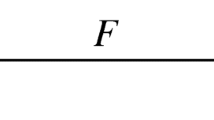Abstract
Modal Meinongianism is a form of Meinongianism whose main supporters are Graham Priest and Francesco Berto. The main idea of modal Meinongianism is to restrict the logical deviance of Meinongian non-existent objects to impossible worlds and thus prevent it from “contaminating” the actual world: the round square is round and not round, but not in the actual world, only in an impossible world. In the actual world, supposedly, no contradiction is true. I will show that Priest’s semantics, as originally formulated in Towards Non-being, tell us something different. According to certain models (especially models that are interesting from a Meinongian point of view), there are true contradictions in the actual world. Berto and Priest have noticed this unexpected consequence and have suggested a solution (I would like to thank an anonymous reviewer for pointing out to me the relevant footnotes in Priest and Berto’s work), but I will show that their solution is highly questionable. In the last section of this paper, I will introduce a new and simpler version of modal Meinongianism that avoids the problem.
Similar content being viewed by others
Notes
See Priest (2005, pp. 20–21). Though Priest is sympathetic to a dialetheist view, he makes clear in this passage that according to the standard version of his theory there are no truth-value gaps nor gluts in the actual world.
My technique differs slightly from Priest’s but it does the same work.
It would be a mistake to think that Pa is not false for the reason that it is true and false; being true and false is not a special semantic value; it is nothing but being true and being false. Therefore, Pa is indeed false in w (which does not exclude that it is also true).
I thank an anonymous reviewer for pointing that out.
By “certain” I mean a random number: it might be every couple \(\langle w,\,\upvarphi \rangle ,\) only some of them but not all, or even none of them.
We need this second clause for the following reason: if \({\updelta }(w,\,{\vert }Pa{\vert }) = 1,\) then Pa is \(\mathrm{true}_{Mws}\) and we expect \({\exists } x(Px)\) also to be \(\mathrm{true}_{Mws}.\) But the first clause will not do the work: Pa is not \(\mathrm{true}_{Mws}\) because of a denoting something that x might also denote; Pa is \(\mathrm{true}_{Mws}\) only because it is assigned to be \(\mathrm{true}_{Mws}.\) Thus, if \({\exists } xPx\) is \(\mathrm{true}_{Mws}\) it will only be because of a formula of form Pt being \(\mathrm{true}_{Mws}.\)
There is no sub-rule \((\mathrm{i}_{\lnot })\) for atomic formula because if \(\upvarphi \) is an atomic formula and \({\updelta }(w,\, {\vert }\upvarphi {\vert })\) is not defined, then \({\lnot }{\upvarphi }\) is always not true. (To say it in other terms: a negation of an atomic formula \(\upvarphi \) is true in a non-actual world w only if \({\updelta }(w,\,{\vert }\upvarphi {\vert }) = 0.\))
References
Bellnap, N. (1977). A useful four-valued logic. In J. M. Dunn & G. Epstein (Eds.), Modern uses of multiple-valued logic (pp. 8–37). Dordrecht: D. Reidel Publishing Co.
Berto, F. (2008). Modal meinongianism for fictional objects. Metaphysica, 9(2), 205–218.
Berto, F. (2011). Modal meinongianism and fiction: The best of three worlds. Philosophical Studies, 152(3), 313–334.
Berto, F. (2013). Existence as a real property. Dordrecht: Synthese Library, Springer, Netherlands.
Berto, F. (2014). On conceiving the inconsistent. Proceedings of the Aristotelian Society, 114, 102–121.
Dunn, J. M. (1976). Intuitive semantics for first-degree entailment and ‘coupled trees’. Philosophical Studies, 29, 149–168.
Parsons, T. (1980). Nonexistent objects. New Haven, CT: Yale University Press.
Priest, G. (2005). Towards non-being. The logic and metaphysics of intentionality. Oxford: Clarendon.
Priest, G. (2008). An introduction to non-classical logic (2nd ed.). New York: Cambridge University Press.
Zalta, E. N. (1983). Abstract objects: An introduction to axiomatic metaphysics. Dordrecht: D. Reidel.
Author information
Authors and Affiliations
Corresponding author
Rights and permissions
About this article
Cite this article
Giraud, T. On modal Meinongianism. Synthese 193, 3329–3346 (2016). https://doi.org/10.1007/s11229-015-0933-8
Received:
Accepted:
Published:
Issue Date:
DOI: https://doi.org/10.1007/s11229-015-0933-8




